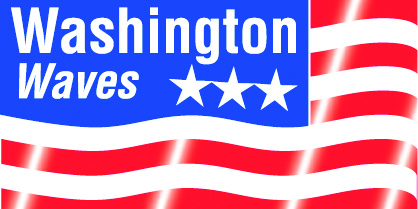Washington, D.C.—While waiting to sign his historic bipartisan infrastructure bill into law, President Joe Biden traveled to a nearby port older than the United States to promote the trillion-dollar measure’s impact.
“This bipartisan infrastructure bill is a major step forward,” Biden said at the Port of Baltimore, touting its roughly $17 billion for ports and waterways.
“It represents the biggest investment in ports in American history.”
After months of intra-party haggling over the bill and Biden’s Build Back Better agenda with a recent price tag of $1.7 trillion, the two were separated, allowing the House to give final congressional approval to H.R. 3684 by a vote of 228 to 206 with the support of 13 Republicans.
The Senate had approved the bill previously, also with a bipartisan vote.
According to the White House, the president will host a bipartisan bill-signing ceremony for the measure on Monday.
Biden and his administration, however, did not wait for the bill to become law before announcing an action plan for America’s ports and waterways. They include several “immediate” actions:
• Support “creative” solutions to current supply chain disruptions by allowing ports flexibility in grants, and redirect project cost savings toward those challenges.
• Alleviate congestion at the Port of Savannah by allowing the Georgia Port Authority to reallocate more than $8 million for pop-up container yards projects in both Georgia and North Carolina, which will allow the transfer of containers via rail and truck.
During his speech in Baltimore, Biden highlighted the Savannah port project, which includes creation of a new 300-plus-mile freight connection between the seaport and the inland port as well as $125 million he said the Port of Baltimore will be receiving to upgrade a 126-year-old railroad tunnel so freight trains can move through with double-stacked cars.
Near-term actions:
• Within the next 45 days, $230 million will be provided to the Port Infrastructure Development Grant program and $13 million to the Marine Highway Program to launch programs to modernize ports and marine highways and support waterborne freight service.
• Within the next 60 days, projects will be identified for U.S. Army Corps of Engineers construction at coastal ports and inland waterways that will provide a roadmap for more than $4 billion in funding to repair outdated infrastructure and deepen harbors for larger cargo ships.
• Within the next 90 days, competition will be opened for the first round of port infrastructure grants funded through the bipartisan infrastructure deal. DOT will announce more than $475 million in additional funding for port marine highway infrastructure.
Additional freight investments include an additional $110 billion to repair roads and bridges and develop a comprehensive freight movement playbook to states on how to use grant and loan programs to alleviate freight bottlenecks and incorporate best worldwide freight planning practices into state freight plans.
On the supply chain issue, a White House fact sheet stated the bipartisan infrastructure deal will follow up on the administration’s unprecedented steps already taken.
As part of the bill’s $17 billion for ports and waterways, the fact sheet stated, congestion and emissions near ports will be addressed, doubling investments in environmental justice by deploying zero-emission technologies and reducing idling and emissions that impair air quality in adjacent neighborhoods.
Flexibility in port grants also will be allowed.
WOTUS Roundtables
Responding to “robust interest,” two agencies extended the deadline for nomination letters from stakeholders interested in participating in one of 10 roundtables to provide regional implications on Waters of the United States (WOTUS) whose definition is to be revised.
Letters now must be received by 11:59 p.m. EST on December 1.
As a result of the deadline extension, the Environmental Protection Agency (EPA) and the U.S. Army Corps of Engineers stated the roundtables are expected to be held in early 2022 with specific dates to be based on availability of those selected to participate.
For additional information, contact Kate Balasa of EPA at 312-886-6027 or Stacey Jensen of the Corps at 703-459-6026.
Sea Year Controversy
A key senator warned that the Transportation Department’s “knee-jerk” decision to pause Sea Year at the U.S. Merchant Marine Academy (USMMA) will not prevent future acts of abuse and harassment.
“It will have a negative impact on the professional development of current midshipmen and increase pressure and scrutiny on survivors of assault,” said Sen. Roger Wicker (R-Miss.), ranking member of the Senate Committee on Commerce, Science and Transportation, whose jurisdiction includes the USMMA.
Wicker issued that warning as he and Sens. Susan Collins (R-Maine), ranking member of the Senate Appropriations Subcommittee on Transportation, Housing and Urban Development and Related Agencies, and Kirsten Gillibrand (D-N.Y) unveiled a bill to strengthen sexual assault and sexual harassment prevention for all mariners, including midshipmen at the USMMA.
Named the Improving Protections for Midshipmen Act, the bill followed a report that the USMMA is being hit with new allegations of sexual misconduct.
“This legislation would protect our mariners from sexual misconduct and hold accountable those who commit these abhorrent behaviors,” Wicker said, adding quick adoption of the bill could lead to Sea Year being resumed by December.
NBSAC Chairs
The National Boating Safety Advisory Committee (NBSAC) recently elected Dave Marlow and John Adey as chairperson and vice chairperson, respectively.
Marlow is the director of product integrity and government affairs at Brunswick Corporation, and Adey is president of the American Boat and Yacht Council.
With 21 members representing the states, industry and boating organizations, the NBSAC provides advice to the secretary of Homeland Security and the Coast Guard on national boating safety.




